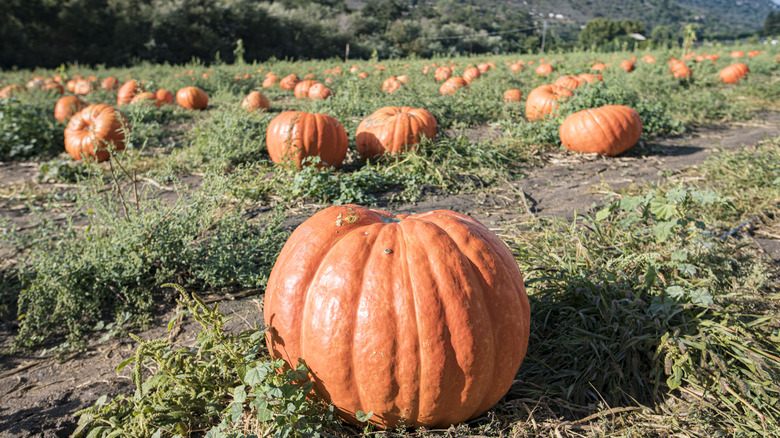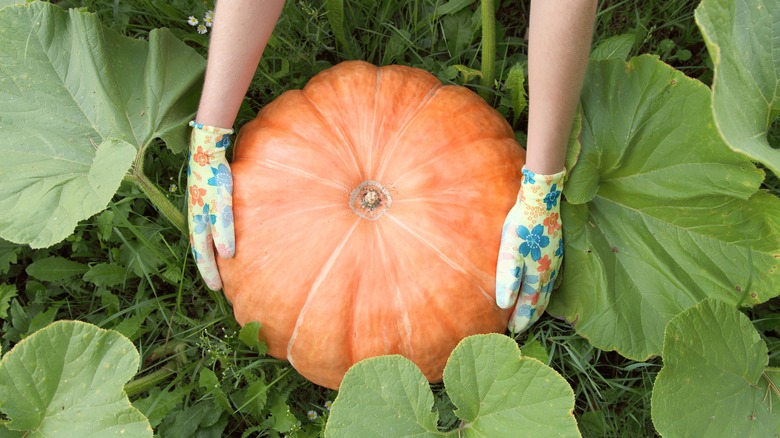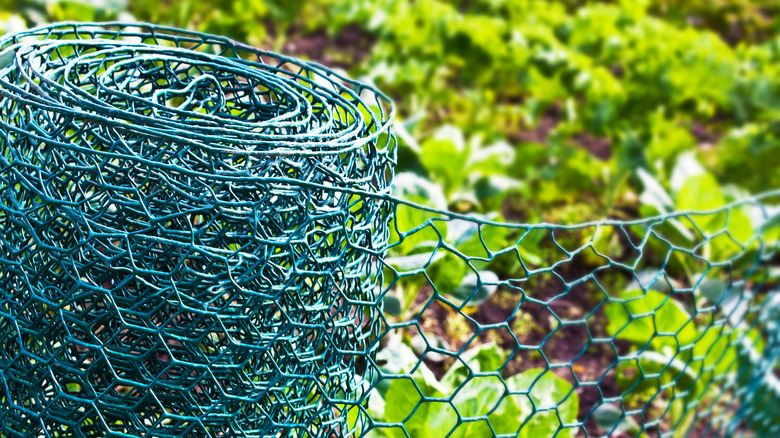The Garden Pest That Might Stop Your Pumpkins From Ever Growing
We may receive a commission on purchases made from links.
Pumpkins are a home favorite fruit and a treat to grow in your garden, but we humans aren't the only ones who find them delicious. Garden intruders remain the biggest threats to your pumpkin patch. Several pests prey on the bulky, orange cucurbits, from aphids to beetles, but one rodent that can't keep its tiny, mangy hands off of them is the garden mouse. While aphids may simply just suck some sap from the leaves, mice can devour all the parts of the pumpkin with zero remorse and no decorum. These admittedly adorable pests can do serious damage even before the pumpkin becomes a pumpkin by digging up and eating the seeds you plant.
Two main types of mice target your pumpkins — deer and white-footed mice. You can easily tell if they are present in your garden from the numerous tiny chewed-up holes on the pumpkins and missing seeds. The fatty seeds are a delicacy, providing ample energy for the mice. If you do notice that your pumpkin crops have been attacked by field mice, then it's high time you take some measures to prevent them from waltzing into your farm.
Use natural means to keep mice out of your pumpkin patch
Discovering mice in your pumpkin patch doesn't mean that you have to go dump a heap of rat poison in the middle of it and wait for the magic to happen. Using pesticides in the garden can have adverse effects that backfire if not used properly. It immediately puts other animals, including the helpful ones, in danger, as well as pets and even yourself. Turn instead to biological means of controlling the field mice that show up to go to chow-town on your pumpkins.
Animals don't like unfamiliar territory. You can ward off hungry mice by altering the pumpkin without affecting the plant. A good way to do this is by rubbing petroleum jelly on it. The sensation would signal to the mice that it isn't business as usual. You can also sprinkle hot chili flakes onto the pumpkin and even around it on the ground to discourage them.
If you have a mouse infestation in your garden, then it goes without saying that the pests live nearby. Look for rodents' nests under shrubbery, in sheds, under patios — anywhere around the garden. Destroy these nests by drowning them out with high-pressure water from a garden hose. Don't forget that these are rodents and they are disease vectors. Simply having them nibble on your plants or defecate in your yard can lead to infections for anyone who comes in contact with them.
Erect a rodent-proof structure around the pumpkin patch
If biological control doesn't work on the rodent enemies in your pumpkin patch and you aren't looking to use chemical control, try building a fence around the garden to keep them out. You have to take into consideration that mice are excellent chewers. Your fence should be made out of bite-proof material, preferably a hard, galvanized metal one like this rodent control wire mesh from Home Depot. Set up garden stakes or posts around the perimeter of the pumpkin patch and wrap the mesh wire fencing around it until it's thick and long enough to deter any white-footed mouse that attempts it. Because garden mice are also accomplished burrowers, make sure that the fencing you erect goes at least 18 inches deep into the ground.
While some sources online offer aromas such as peppermint and several essential oils as a solution to repel mice from your pumpkin patch, there is not enough evidence to affirm it yet. Camphor balls are known to have some effect on mice, but dropping mothballs in an open garden may not do much damage because the air has to be saturated with the naphthalene to be effective, and the same goes for the scent oils. If all else fails, hire a professional pest control service to conduct an analysis and give you the best path to take.


